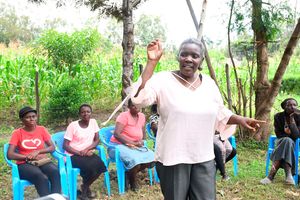Expert: This is the danger posed by careless HIV-positive teenagers

HIV Testing
What you need to know:
- The Kenya HIV Estimates Report, 2020 reveals that adolescents and young people account for almost half of total new infections.
- Of the country’s 32,017 new HIV infections reported, 11,229 occurred among adolescents and young people aged 15 to 24.
Though the HIV infection rate in the country has generally been going down, new infections among adolescents and young people have been on the rise.
The Kenya HIV Estimates Report, 2020 reveals that adolescents and young people account for almost half of total new infections. Of the country’s 32,017 new HIV infections reported, 11,229 occurred among adolescents and young people aged 15 to 24. Similarly, 30 new HIV infections occur among this group daily in Kenya.
According to Dr Adeel Shah, an infectious disease specialist and paediatrician at the Aga Khan University Hospital in Nairobi, there are two main factors that have contributed to this trend. “These adolescents who acquired the virus during birth have now grown and some are young adults. During childhood, their guardians ensured that they adhered to the anti-retroviral therapy treatment.
But then, as they transitioned into adulthood, some quit taking their medication because they had no idea why they were taking the medication,” he says. This is because, he adds, there wasn’t enough communication to help this group transition into adulthood with a clear understanding of their condition.
“This means they become a transmission group,” he said. These adolescents and young adults, Dr Shah notes, are entering into relationships with their HIV-negative peers and engaging in unprotected sex, which exposes more people to infection.
Another scenario, according to Dr Shah, involves underprivileged adolescents who are seeking financial benefits from older men in exchange for sexual favours. “This exposes them to HIV and STIs from these older men. It becomes even worse since this same group of people will engage in sex with their peers, increasing even further the risks of transmission,” he says.
Other than that, a significant percentage of this group does not adhere to treatment and does not seek treatment on time, which means they are likely to experience complications arising from HIV infections and eventually die of Aids. “This lack of adherence means also there is a likelihood of an increase in mother-to -baby HIV transmission among this group of people,” argues Dr Shah.
Against this backdrop, he says, a catastrophe might be in the making that may see the country go back to the 1980s and early 1990s when HIV prevalence was at its peak. “If we don’t address the issues right now, in 10-15 years, we might witness a resurgence of HIV infections,” he warns.
However, Dr Shah notes that though this is an area of concern, it is not all doom and gloom. “We should have disclosure programmes to ensure that, as children who were born with HIV transition into adulthood, they are counselled, made aware of their condition and informed about the significance of taking their medication,” he reasons.
He adds that there should be more targeted programmes targeting adolescents. “I am talking about adolescent-specific programmes where, for instance, they can seek healthcare services without necessarily coming with their parents,” says Dr Shah.
He also says there should be designated parts within healthcare facilities for adolescents, as well as specific healthcare workers dealing with them. “We need them to feel comfortable. They need to feel that we are there to support them and not judging them, not feeling under pressure from the society,” notes the specialist.





